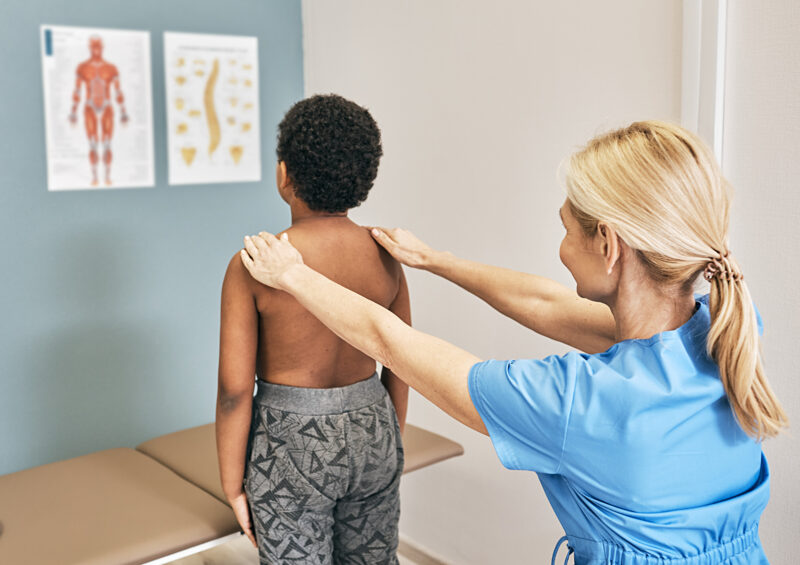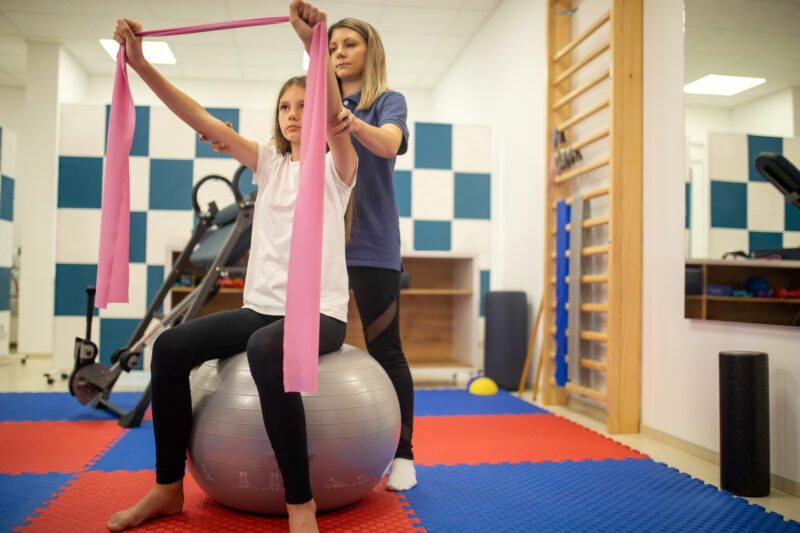
Well visit appointments play a big role in the early detection of scoliosis. Regular checkups are needed until a child goes through puberty and stops growing.
If your child has a sideways spinal curve that’s shaped like the letter “S” or “C” they have a condition called scoliosis. While the cause of most childhood cases of scoliosis are idiopathic or unknown, neuromuscular conditions like cerebral palsy and muscular dystrophy can cause kids to develop it. In some instances, scoliosis runs in families. Although we don’t always know what causes scoliosis, we do know it isn’t caused by things like carrying a heavy backpack, bad posture or playing sports.
Scoliosis can develop in infancy or early childhood, but it most commonly occurs between ages 10-14 when spinal curves tend to advance during peak growth spurts. It strikes equally among boys and girls; however, girls are more prone to developing severe cases.
If you suspect your child has scoliosis, early diagnosis and treatment could help avoid surgery in the future. Here are 5 facts to keep in mind:

Exercises that strengthen the stomach and back muscles may help offer pain relief for kids suffering from scoliosis.
- Well visit appointments play a big role in the early detection of scoliosis. Regular checkups are needed until a child goes through puberty and stops growing.
- Signs of scoliosis include uneven hips or shoulders (one side is higher than the other), a leaning appearance to one side, or one shoulder blade that sticks out higher than the other.
- Larger curves have a higher occurrence of back and rib pain. This is because large curves can damage the joints, cause muscular imbalance, change spinal alignment, make the ribs rub against the pelvis or cause lung problems, like shortness of breath.
- Playing sports or exercising won’t make scoliosis worse. Orthopedic specialists encourage activity for physical and emotional well-being. Exercises that strengthen the stomach and back muscles, like Pilates, yoga and swimming may offer pain relief.
- Treatment for scoliosis varies depending on a child’s age and the size and location of the curve.

The Schroth Method is an innovative form of physical therapy that can improve your child’s spinal deformity without surgery. Used in combination with bracing, it is typically used with growing children and adolescents.
Akron Children’s orthopedic specialists use innovative technologies and techniques to advance care for children and adolescents with scoliosis and kyphosis (rounding of the upper back), as well as other spinal conditions. We utilize EOS Ultra Low Dose 2D/3D Imaging to capture high quality imaging of spinal deformities, while also limiting a child’s exposure to radiation. Learn more about scoliosis and explore the treatments offered at the Spine Center, an Akron Children’s Center of Excellence.










